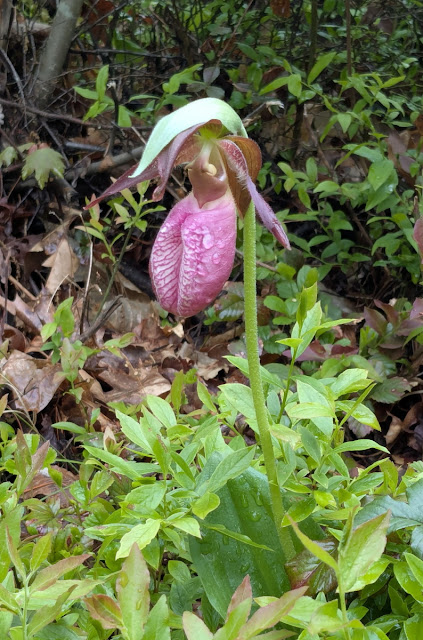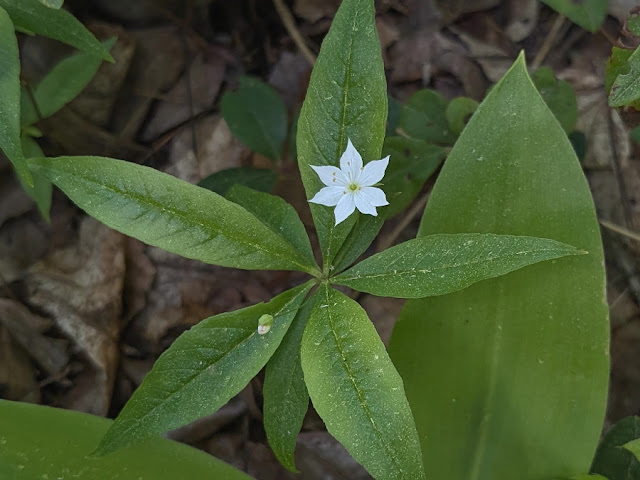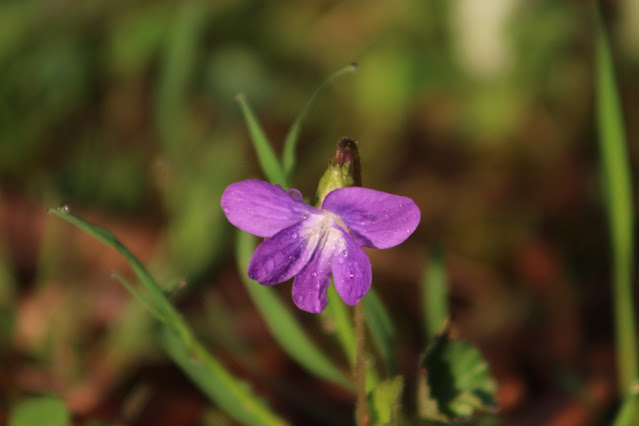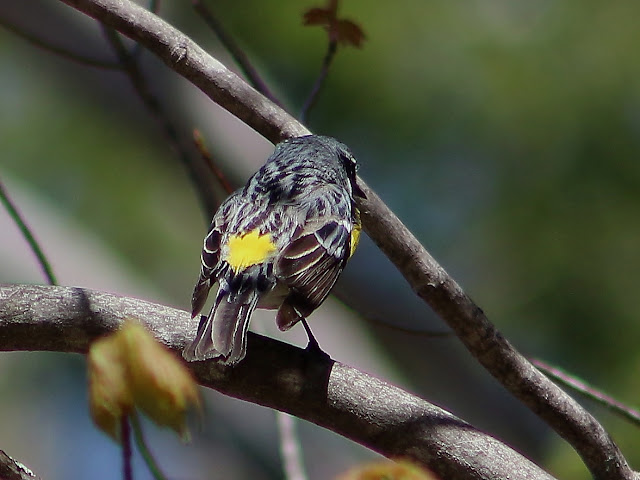Swimmers in New Hampshire lakes might not be pleased to see this, but rest assured that these snakes will flee from anything larger than a big frog, especially humans, so there's nothing to worry about unless you decide to approach one of these guys.
 |
| A northern water snake on a midday search for food or a mate. |
Northern Water Snakes are very common around all our waterbodies, rarely found any distance from a pond, lake, or stream. They are excellent swimmers and especially active this time of year when they are searching for mates. After mating the two snakes will go their separate ways, with the female gestating 10 to 30 young until late summer. During this time, water snakes feed primarily on fish and amphibians, but also crayfish, leeches, and other snakes.
Snakes use their tongue as a sensor. They stick it out to collect airborne molecules on it, then pull it in into their head and place it into an organ that lets them smell what was captured on the tongue. The forked tongue provides a stereoscopic capability which lets them determine the direction of the source.
 |
| Sticking our its tongue to smell. |
Northern water snakes are not poisonous, but do have sharp teeth they use catch and hold onto their prey, which they swallow whole. With fast reflexes they are able to catch fish, sometimes hunting minnows at night, though they are most active during the day, and are often found sunning themselves on a warm rock or branch at the water's edge.
 |
| A good size water snake I found sunning itself on a rock a few summers ago. |
Predators of water snakes include birds, racoons, and snapping turtles, as well as other snakes. Some day maybe I'll see an eagle swoop down and grab a swimming snake off the surface of the lake.
The female water snake is ovoviviparous, meaning it gives birth to live young which are left completely on their own. This is the time for larger fish to exact revenge, as the infant snakes are especially vulnerable to fish. Many of the young won't survive, but with a couple dozen snakes born every year over perhaps a five year life span, the species is not in danger - where there is a good food source. The biggest risk to this species is the loss of natural waterfront habitat which provides the food it needs.
I haven't seen a snake sunning itself on this tree trunk that fell into Lake Wicwas, but lots of other animals have been using it including turtles, geese, ducks, and this week, a Double-crested Cormorant.
 |
| Double-crested Cormorant. |
The water level in Wicwas is still about 10" above normal, but at least one pair of geese was able to incubate their eggs before the lake flooded.
 |
| Looks like five goslings. |
The loons, however, are still cruising the lake, waiting for the level to go down before building a nest. One day we saw both pairs of loons floating on their respective side of the line that divides the two territories, and both pairs were vocalizing loudly to let the other pair know they need to stay where they are. The northern pair did have an intruder one day, which they appear to have quickly sent packing to another lake.
 |
| An intruder in the northern territory. |
Cool weather has extended the period of the early wildflowers; all the ones noted last week are still in bloom. This week the Lady's Slippers are in peak color, the Painted Trilliums have started to bloom, the Canada Mayflowers are about to, and the various cherries are in full bloom.
 |
| Painted Trillium. |
I also saw a small Jack-in-the-Pulpit just starting its spring sermon.
 |
| Jack-in-the-Pulpit |
There will be more of these soon, but you have to look for them as they hide under cover of their leaves!













































